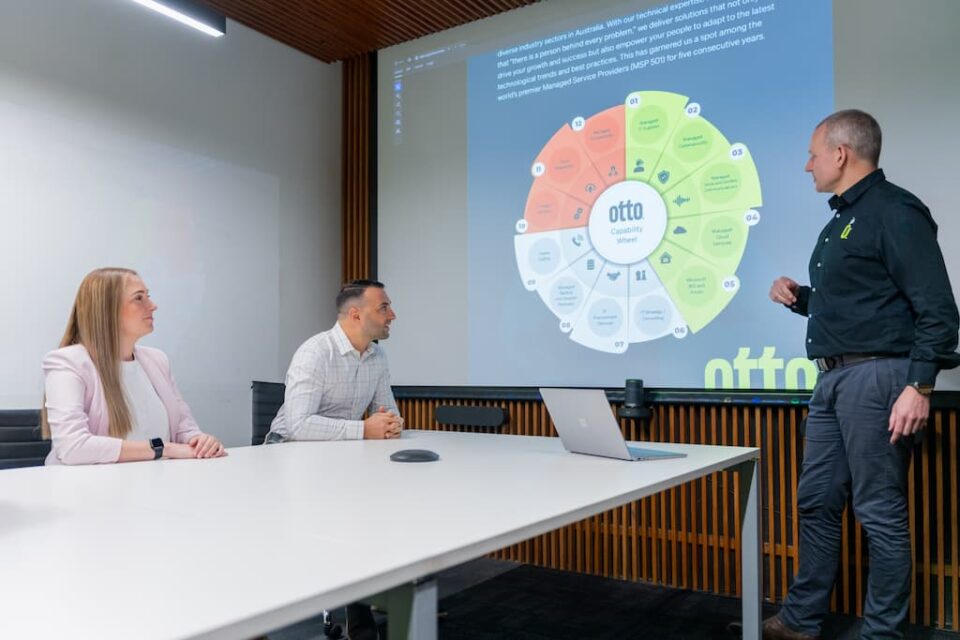
As a renowned cybersecurity provider for businesses in Australia, AI has fast become a huge part of the solutions we offer our clients.
AI has become a core part of cybersecurity in recent years, with machine learning being one of the biggest applications of this technology in the field. The use of ML as a tool to detect, recognise and predict security threats is a game changer in cybersecurity.
With artificial intelligence, cybersecurity systems are equipped to analyse huge amounts of data, note patterns, and make smart decisions at higher speeds than humans.
In this post, let’s explore more details of how AI is currently influencing cybersecurity.
What Are Some Examples of AI in Cyber Security?
AI provides a smarter, faster approach to cyber threat detection and response. This helps businesses avoid huge losses that come from cyber attacks and maintains some level of business continuity.
Here are some practical examples of how AI is used in cybersecurity today:
Threat Pattern Recognition
AI systems are highly effective at identifying unusual or malicious activity across different networks. The technology continuously learns from normal behaviour patterns to detect strange occurrences like unexpected login attempts or unauthorised data transfers that may indicate a security breach in progress.
Automated Recommendations for Threat Response
AI provides security teams with clear, actionable steps to take when it detects inbound threats. So, instead of sifting through raw data, your cybersecurity professional for business will receive insights on the best next steps to stop any attack attempt in its tracks.
Autonomous Threat Mitigation
Some advanced AI systems can act without human input in high-risk or time-sensitive scenarios. For example, if your system detects a known malware strain, AI can isolate infected devices, block suspicious traffic, or instantly revoke access privileges to contain the threat.
Detection of Known and Emerging Attacks
AI can identify a wide range of cyberattacks, from well-known threats like SQL injection and cross-site scripting (XSS) to new ones that haven’t been documented yet. AI deep learning models are trained on historical data and keep evolving to keep up with new attack patterns.
Phishing Email Identification
Phishing emails are the most popular kind of cyber attacks. Using Natural Language Processing (NLP) techniques, AI can scan and interpret email content for suspicious language, tone, or intent. This helps filter out phishing emails before they even reach employees, reducing the risk of human error.
What Are The Positive Effects of AI In Cybersecurity?
AI makes it easier and faster to detect cyber threats and stop them before they cause more serious issues. This technology can learn quickly and continuously and analyse complex data sets in real time, enabling it to provide powerful benefits that strengthen an organisation’s overall security posture.
Here are some of the most impactful ways AI improves cybersecurity:
Complete Visibility
AI-powered tools can scan and map every device, user, application, and data point connected to your network. This helps businesses maintain an up-to-date, accurate inventory of IT assets and understand which assets are most critical to protect.
Smarter Risk Prioritisation
By constantly updating itself on global cyber threats and industry-specific risks, AI helps organisations focus their defences where they matter most. It evaluates the chances and potential impact of different threats on the business so that organisations can make smarter security decisions.
Improved Security Tool Performance
AI detects threats and also evaluates how well your current security tools are working. This enables the tech to identify gaps and redundancies in your cybersecurity strategy and infrastructure, helping you improve your defences and channel funds to the right solutions.
Behavioural Biometrics
AI can analyse user behaviour, such as typing speed, mouse movements, and login habits, to detect if a session is being hijacked or if a credentialed user is acting suspiciously. These insights allow for adaptive authentication or immediate session termination when needed.
What is the future use of AI in cyber security?
Cyber threats have become more sophisticated, so the role of AI in cybersecurity is more important than ever. AI’s ability to learn from huge amounts of data means it can adapt to new attack methods faster than traditional tools. In the near future, AI-driven cybersecurity systems will be able to detect and respond to threats in real-time and even predict and neutralise risks before they materialise.
With advancements in machine learning, generative AI, predictive analytics, and autonomous security operations, AI is shaping a future where cyber defences become smarter, faster, and more proactive, giving organisations the edge they need to stay protected at all times.
managed it support articles
Related Blog Articles
Discover more insights to optimise your business with the latest IT trends and best practices. Stay ahead of the curve by learning how to leverage cutting-edge technology for success. Explore expert advice and valuable guidance to navigate the evolving world of IT solutions



